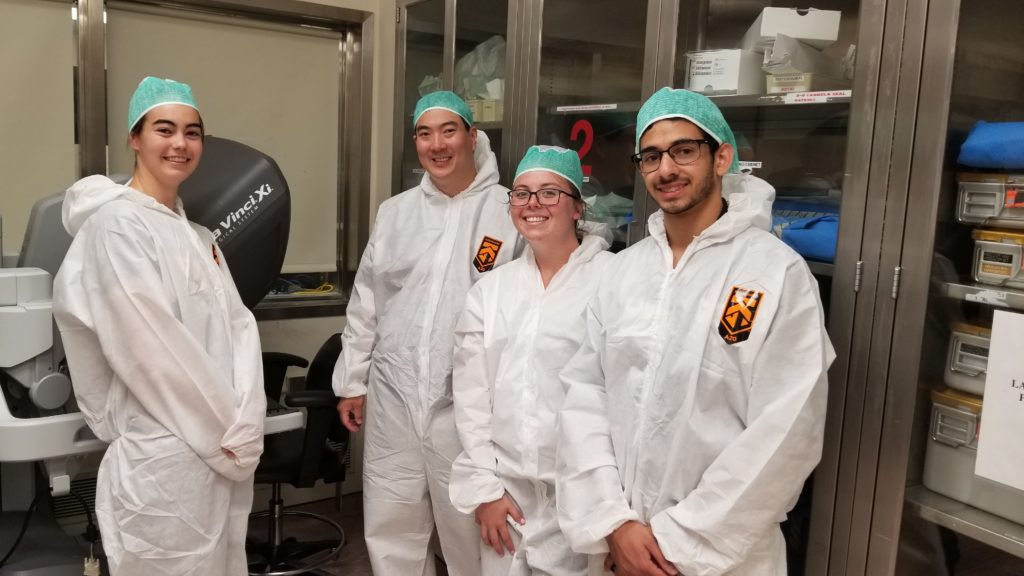Life in the lab is focused: students immersed in biomedical engineering research at TCNJ have spent months studying the effects of space radiation on rodent bones.
But the experience has been anything but limiting under the tutelage of Assistant Professor Anthony Lau whose estimable expertise and resume have given his students an entrée to research at big universities and labs.
Since his arrival at TCNJ four years ago, Lau has collaborated with researchers at Johns Hopkins University and NASA’s Space Radiation Laboratory at Brookhaven in studying the bones of rats that have been subjected to radiation. The bones are measured for density and volume, and students in Lau’s lab take it a step further by measuring their strength.
The research has real-life applications related to the effects of radiation on astronauts who’ve spent extended time in space and patients on Earth who have received radiation therapy for cancer.
Lau’s lab may be home base, but he and his student researchers are voyagers, too.
For the past few years, Lau has taken students to — and arranged for collaborations with — some of the most prestigious labs and institutions in the field. TCNJ undergrads have visited the NASA Lab at Brookhaven on Long Island and the National Institutes of Health in Bethesda, Maryland, where they got to test the da Vinci surgical system. They’ve visited the National Space Biomedical Research Institute at the University of North Carolina, Chapel Hill and the University of Virginia’s Center for Applied Biomechanics, home to the largest school-based crash lab in the world.

“I saw that our research was on par with larger institutions and facilities,” says Rosalie Connell ’21, who now wants to pursue a PhD in biomedical engineering thanks in part to the inspirational excursions.
Last year, seniors Benjamin Hezrony and R.J. Carpenter presented their research at a NASA conference at the Johnson Space Center in Texas.
“We presented with big name schools and held our own, and that’s awesome,” says Carpenter, who spent time last summer researching injury biomechanics at Ohio State University.
He says Lau’s reputation opens doors for TCNJ students. “We have a professor who really cares,” he says.
Back home in Ewing, five students continue to study radiation and rodent bones in collaboration with researchers at Johns Hopkins University. Lau has applied for a NASA grant to secure a bone scanner that will allow for 3D high-resolution models of the bones at his lab in the STEM building, expanding the scope of research done at TCNJ. And more trips will be planned.
“All the students tell me it makes them extra motivated,” he said.
— Patricia Alex
